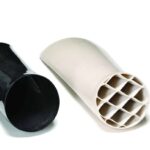Bavarian-based supercar manufacturer launched a convertible car based on the Ferrari 812 GTS made of ultra-light material. After the public presentation of three generations of Ferrari Gran Turismo in recent years based on the 599 GTB, the F12 and the Ferrari 812 Superfast, this year Mansory launches a convertible version: the Stallone GTS (MY21).
The bodywork components are made of carbon, forged sports wheels entirely in black, a powerful performance update and a series of internal changes give the two-door Spider an amazing and masculine look.
The hardtop (RHT) can be opened and closed in just 14 seconds. This let the driver enjoy open-air driving as often and as widely as possible. Obviously, everything can also be done while driving (up to 45 km / h).
From its more than 30 years tradition the luxury car manufacturer Mansory, headquartered in Bavaria, produces its aerodynamic Ferrari components exclusively from ultralight carbon material. Thanks to the many years of experience of the internal specialists, the carbon fiber structure is once again able to shine perfectly in grey and black. All the components in carbon fiber are integrated in a very harmonious way in the design of the Italian series thanks to precise craftsmanship.
Technical information
- Complete vehicle conversion
- Special paint Daytona-Grey with blue accents
- All add-on parts in carbon
- Full leather interior in blue with white applications
- Power increase to 830 hp and 740 Nm
- Performance: Vmax 345 km/h and 0-100 km/h in 2.8s
- CO2 emissions (combined): 383 g/km
- Fuel consumption (combined): 17.3 l/100km
 |
SUBSCRIBE NOW
|
















